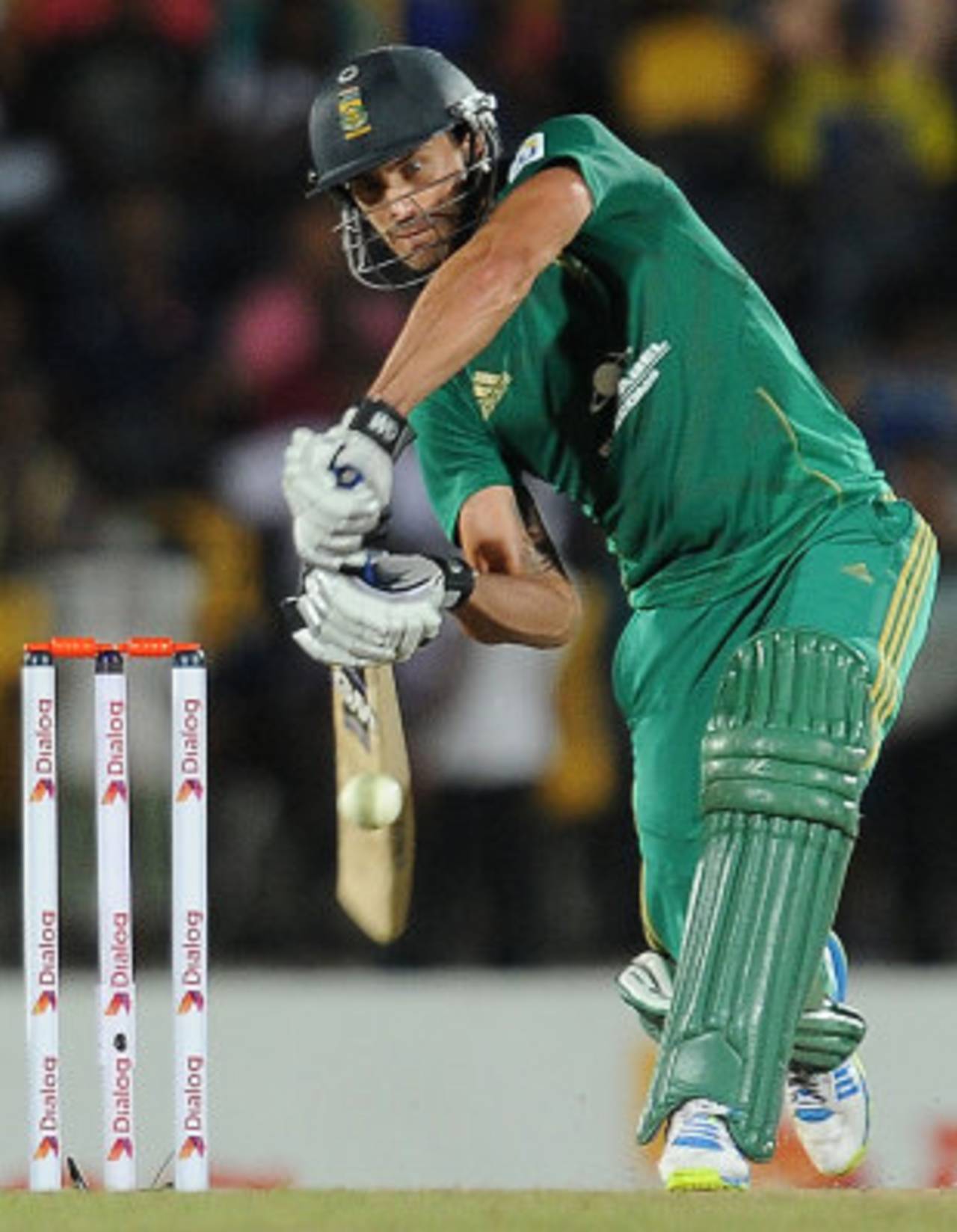"The future is that we will play in the Ram Slam T20."
That was Graeme Smith's curt reply, accompanied with a smile that belied his frustration, when asked what was on the horizon for his team after their series win over India. Smith's irritation with the curtailed India tour and stop-start nature of South Africa's Test schedule is understandable but, for once, it had a welcome consequence: the biggest cricketing draw cards could bolster the domestic game.
South Africa's 20-over competition is one of the lower-profile ones going around. It is not a Premier League like the Indian, Bangladesh and Caribbean varieties and lacks a 'glam' factor. At the end of last summer, CSA committed itself to changing that. Suggestions included creating a family atmosphere and abolishing midweek matches in favour of weekend double-headers.
The former became the focal point of the domestic 50-over competition while the latter seems to have been shelved. The idea that remained intact was involving as many big names as possible and it is this concept
Justin Kemp, a veteran of the domestic scene who is in 16th season, believes will give the competition much-needed clout.
"The more the national players turn out, the more credibility a tournament has," Kemp told ESPNcricinfo. "Over the years, we haven't seen the national players really turn out in this competition and that may be why interest hasn't been that high and audiences have dwindled. If you look at the Caribbean competition, it was packed out every day. They had a fair number of overseas players, three to four per team. Since we have something similar this time, with our own national players, we may start seeing bigger crowds and more interest."
The shortened India tour has allowed for national player availability for the entire 20-over competition and not just the latter half, as originally planned. With five of the six franchises signing foreign names, and no other cricket going on in the country until the Tests against Australia in mid-February, that should mean T20 takes centre stage, as it has done in other places. But the early indications are that this will not be the summer South Africa's local hit-and-giggle finally grows up to match its international counterparts.
The competition kicked off on the third day of a festival of cricket at Newlands, as part of the efforts to make up for the absence of a New Year's Test. Unlike any other year, it got underway with a triple-header. All six franchises were in action on one day but the guarantee of big-name sightings was only partially fulfilled.
Three of the expected superstars did not turn out for the teams and will not be seen for the duration of the competition. Dale Steyn has been granted extended rest for a
rib problem so won't be bowling for the Cobras, while the Titans were without AB de Villiers, who requires hand surgery before the Australia series. Shahid Afridi withdrew from the Knights squad for personal reason.
On Wednesday, Chris Gayle, arguably the biggest crowd-puller of them all, was also taken
out of contention. The Jamaican has not recovered from a hamstring tear and cannot fulfil his contract with the Dolphins.
Still, there was an overseas name in action on the opening day - the Lions fielded Azhar Mahmood - and there were plenty of South Africa superstars on show. David Miller was in the Dolphins XI, Wayne Parnell in the Warriors and Albie Morkel and Faf du Plessis turned out for the Titans. But they had few people watching them, far fewer than the number that turned up to watch an
exhibition match between the national cricket and rugby teams two days earlier.
"I expected more," Kemp said. "It was disappointing to see a full stadium to watch the Proteas take on the Springboks and then maybe only half full for the other matches."For the final match, featuring the home-side the Cobras, who boast the largest contingent of national players including Smith, Hashim Amla, JP Duminy and Robin Peterson, the gates were opened to let people in for free and still the stands did not swell.
Low crowd figures were criticised throughout the India series and although they are not the only measure of interest, they are an important one. The South African stadium experience is comfortable, food and drink is readily available and ticket prices are reasonable.
With that in mind, there's reason to wonder whether vacant seats are either an indication that the product not compelling enough or that it's missing its market. Kemp thinks it could be the latter. "It's difficult to get people out of their living rooms, maybe because the television coverage is too good," Kemp said, jokingly. "But time of year could also be a problem. January is tough. People have just come back from holidays."
Choosing a different window is impossible for South Africa because their prime period, over December, is reserved for international cricket. This season has given them their best-case scenario. If even that is not good enough, then the event may fizzle into just another barely watched local competition, with one major difference for those involved.
"The pressure goes up for us players in the twenty-over competition because of the money at stake," Kemp said. The two teams in the final book places in the lucrative Champions League, which may end up being the most important outcome for the competing franchises.
Firdose Moonda is ESPNcricinfo's South Africa correspondent
